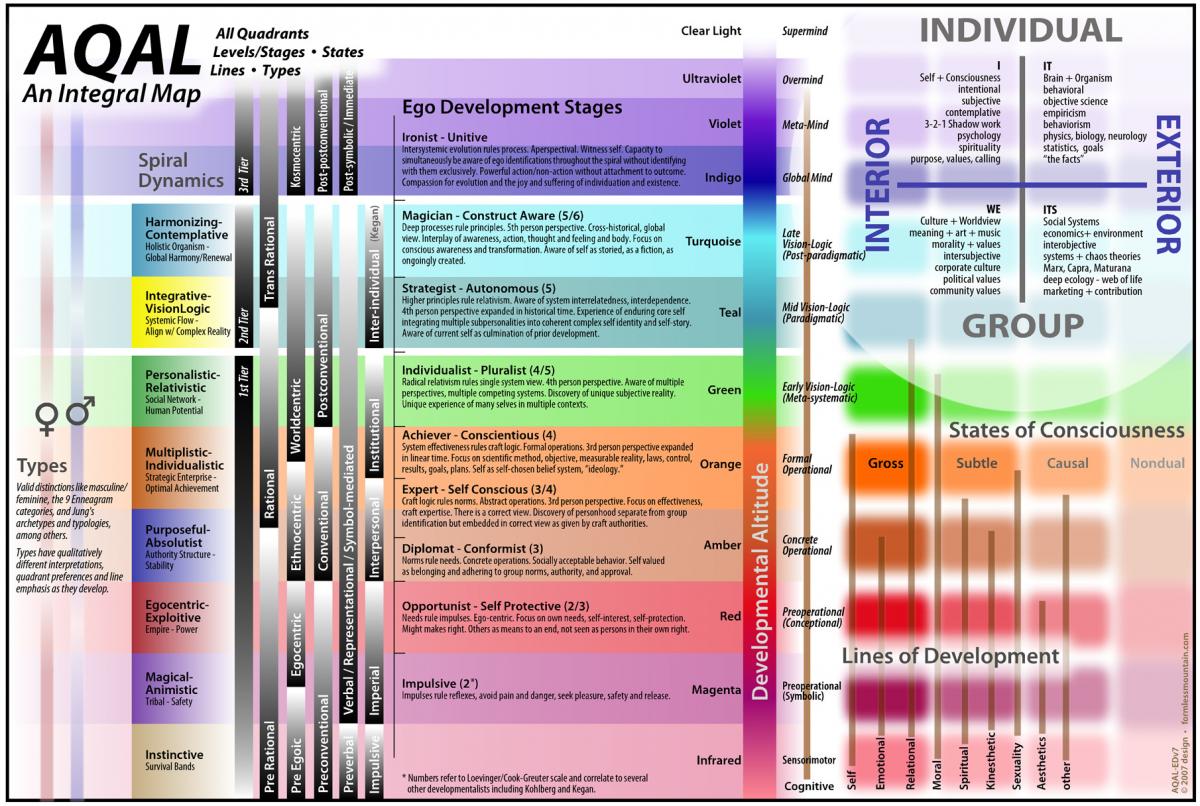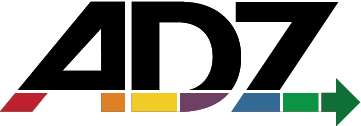What is Integral Theory?
Integral Theory is a post-disciplinary meta-framework that incorporates the insights of various systems of thought and research findings (Wilber, 1995, 2000, 2007). Integral Theory is a comprehensive map useful in considering various dimensions of complex social problems faced in the 21st century.
Appreciating the work of numerous developmental scientists (Loevinger, 1976; Kohlberg, 1981; Gilligan, 1982; Piaget, 1972; Freud & Strachey, 1960; Fowler, 1981; and many more), as well as the study of multiple intelligences (Gardner, 1983) and emotional intelligence (Goleman, 1995), Wilber (2000) identifies various lines of development, each of which involves movement through increasingly complex structural stages expanding strengths in particular areas. Together, these developmental lines play a role in one’s overall developmental level of awareness. Interaction between the individual and the collective facilitate this developmental process (Wilber, 2000). Esbjorn-Hargens (2009) provides a helpful overview of Integral Theory.
The Integral Theory framework is also known as “AQAL.” This stands for all quadrants, all levels, all lines, all states, and all types.
Quadrants, or perspectives/dimensions
Representing the way in which the individual and collective arise together, the four quadrants are perspectives, or dimensions, of any occurrence. Here, the quadrants are depicting the perspectives that can be taken on the question, “What is a Human Being?”
The upper quadrants represent the individual, and the lower quadrants represent the collective. The right quadrants are aspects that can be observed about the individual or the collective. The left quadrants represent subjective and inter-subjective aspects about which we would need to ask questions to discover. Any occasion can be viewed from these interior and exterior perspectives on the individual and collective. While it may appear that the quadrants are interacting, they are actually co-arising.
Levels, or stages of development
Developmental researchers have found that people need to work through one stage of development in order to move on to the next. Each developmental stage transcends and includes earlier stages, and developmental milestones cannot be skipped.
Lines, or lines of intelligence
The graph below depicts just a few known lines of development. Recognizing these multiple lines, we can see that development is really quite fluid – people possess their own unique strengths in a variety of areas. While developmental lines are often “uneven,” Integral Theory suggests that looking across lines of development can reveal a general level of overall consciousness development.
States, or states of consciousness
Integral Theory also recognizes that people have access to a variety of states of consciousness that are available at any stage of development. These include waking, dreaming, and deep sleep as well as phenomenal emotional states, meditative states, and drug-induced states.
Types, or personality typing
Integral Theory includes attention to the way that different “types” express at various developmental stages. These include masculine and feminine gender types, personality types (such as Myers-Briggs or the Enneagram), and other typing systems.
Holons
A holon is something that is simultaneously a whole and a part. Holons are self-reliant units that possess a degree of independence and can handle contingencies without asking higher authorities for instructions. These holons are also simultaneously subject to control from one or more of these higher authorities.
A hierarchy of holons is called a holarchy. The test of holarchy is that if all instances of a given type of holon cease to exist, then all the holons they were part of must cease to exist too. Thus an atom is of a lower standing in the hierarchy than a molecule, because if you removed all molecules, atoms could still exist, whereas if you removed all atoms, molecules, in a strict sense would cease to exist. Ken Wilber's concept is known as the doctrine of the fundamental and the significant. A hydrogen atom is more fundamental than an ant, but an ant is more significant.

Partially excerpted from ,“Integral Theory.” Integral Social Work RSS, www.integralsocialwork.com/index.php/integral-theory/.



